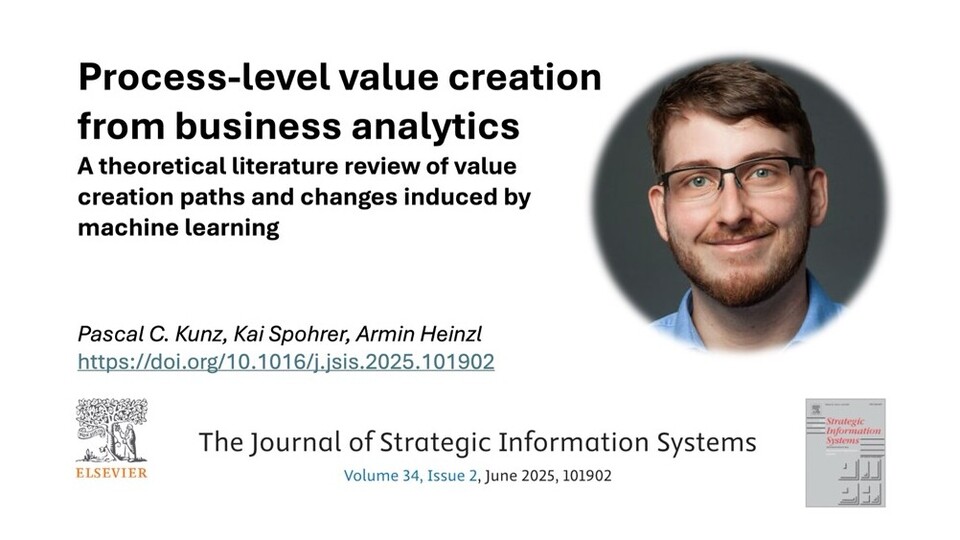Article Published: Process-level value creation from business analytics

Compared to dominant firm-level views, the contribution consistently focuses on the process level to make explicit the mechanisms connecting analytic outputs, organizational knowledge, decisions, and actions. It also integrates previously disconnected streams of business analytics and machine learning, demonstrating the increasing importance of augmentation, automation, and effective feedback loops in operational contexts.
The key insights of the article are:
§Business analytics creates process-level value along several paths, including information processing, decision augmentation/
- Machine learning amplifies prediction- and prescription-oriented value and makes continuous feedback loops central, while traditional knowledge accumulation and transfer become more challenging.
- Autonomy, dynamism, and opacity in ML explain these path shifts: reduced human processing, higher need for ongoing feedback, and impeded knowledge formation and transfer.
- The relative usefulness of each path is context-dependent and varies with task characteristics, process design, and technology choices.
- A research agenda around process changes induced by BA/
ML, knowledge effects (including machine-based knowledge), and the design of high-quality feedback mechanisms is outlined and connected to relevant reference theories.
Practically, the article offers an analysis and design framework for the design, implementation, and management of business analytics systems. It can be applied by executives, developers, and users to identify relevant value creation paths, prioritize target effects, and select suitable technologies and application scenarios to ensure successful augmentation/
The contribution was published in 2025 and is accessible online. It provides a reference framework for future research and for practice-oriented design and deployment of BA/